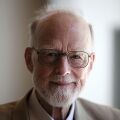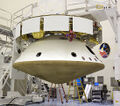Template:Selected anniversaries/January 11: Difference between revisions
No edit summary |
No edit summary |
||
| (12 intermediate revisions by the same user not shown) | |||
| Line 2: | Line 2: | ||
File:Pedro Nunes.png|link=Pedro Nunes (nonfiction)|1502: Mathematician, cosmographer, and academic [[Pedro Nunes (nonfiction)|Pedro Nunes]] born. He will be one of the greatest mathematicians of his time, known for his mathematical approach to navigation and cartography. | File:Pedro Nunes.png|link=Pedro Nunes (nonfiction)|1502: Mathematician, cosmographer, and academic [[Pedro Nunes (nonfiction)|Pedro Nunes]] born. He will be one of the greatest mathematicians of his time, known for his mathematical approach to navigation and cartography. | ||
||Guidobaldo del Monte | ||1545: Guidobaldo del Monte born ... mathematician, philosopher and astronomer. Pic. | ||
File:English Lottery 1566 Scroll.jpg|link=Lottery (nonfiction)|1569: First recorded [[Lottery (nonfiction)|lottery]] in England. | File:English Lottery 1566 Scroll.jpg|link=Lottery (nonfiction)|1569: First recorded [[Lottery (nonfiction)|lottery]] in England. | ||
File:Niels Steensen.png|link=Niels Steensen (nonfiction)|1638: Scientist and bishop [[Niels Steensen (nonfiction)|Niels Steensen]] born. He will question explanations for tear production, the idea that fossils grow in the ground. | File:Niels Steensen.png|link=Niels Steensen (nonfiction)|1638: Scientist and bishop [[Niels Steensen (nonfiction)|Niels Steensen]] born. He will question explanations for tear production, the idea that fossils grow in the ground. | ||
||Vincenzo Riccati | ||1707: Vincenzo Riccati born ... mathematician and physicist. He was the brother of Giordano Riccati, and the second son of Jacopo Riccati. Riccati's main research continued the work of his father in mathematical analysis, especially in the fields of the differential equations and physics. Pic. | ||
||1757: Louis Bertrand Castel dies ... mathematician and philosopher. Pics: misc. | |||
File:Samuel Bentham.jpg|link=Samuel Bentham (nonfiction)|1757: engineer and naval architect [[Samuel Bentham (nonfiction)|Samuel Bentham]] born. He will design the first Panopticon. | File:Samuel Bentham.jpg|link=Samuel Bentham (nonfiction)|1757: engineer and naval architect [[Samuel Bentham (nonfiction)|Samuel Bentham]] born. He will design the first Panopticon. | ||
||1786 | ||1786: Joseph Jackson Lister born ... physicist. | ||
||1787: William Herschel discovers Titania and Oberon, two moons of Uranus. | |||
||1788: William Thomas Brande born ... chemist and academic. | |||
||1800: Ányos Jedlik born ... physicist and engineer. | |||
||1804: James Tytler dies ... apothecary and the editor of the second edition of Encyclopædia Britannica. Tytler became the first person in Britain to fly by ascending in a hot air balloon (1784). Pic. | |||
|| | ||1806: Ferdinand Minding born ... mathematician known for his contributions to differential geometry. Minding considered questions of bending of surfaces and proved the invariance of geodesic curvature. He studied ruled surfaces, developable surfaces and surfaces of revolution and determined geodesics on the pseudosphere. Pic. | ||
|| | ||1826: Giuseppe Battaglini born ... mathematician. | ||
|| | ||1842: William James born ... psychologist and philosopher who was a leader of the philosophical movement of Pragmatism and of the psychological movement of functionalism. Although he first began a career as a zoologist, and traveled to Brazil on expedition with Louis Agassiz, James moved to the medical school, and then his life’s work investigating the mind. He served terms as President of the American Psychological Association and of the International Society for Psychical Research. After retiring from active teaching, he became the foremost American advocate for "pragmatism" in philosophical thought by which "that is true which works." Pic. | ||
|| | ||1845: Albert Victor Bäcklund born ... mathematician and physicist. | ||
|| | ||1865: Johannes Franz Hartmann born ... physicist and astronomer. In 1904, while studying the spectroscopy of Delta Orionis he noticed that most of the spectrum had a shift, except the calcium lines, which he interpreted as indicating the presence of interstellar medium. Pic. | ||
|| | ||1872: George Washington Pierce dies ... inventor who was a pioneer in radiotelephony and a noted teacher of communication engineering. He did work that led to the practical application of a variety of experimental discoveries in piezoelectricity and magnetostriction. He developed the Pierce oscillator, which utilizes quartz crystal to keep radio transmissions precisely on the assigned frequency and to provide similar accuracy for frequency meters. His other accomplishments include the mathematical calculation of the radiation properties of radio antennae; invention of the mercury-vapor discharge tube, which was the forerunner of the thyratron; invention of a method of recording sound on film; and sound generation by bats and insects. Pic: https://web2.ph.utexas.edu/utphysicshistory/GeorgeWPierce.html | ||
|| | ||1872: Charles-Pierre-Mathieu Combes dies ... engineer and academic ... He was a model of what is now called a consultant engineer. Pic. | ||
|| | ||1889: Calvin Bridges born ... geneticist and academic. | ||
|| | ||1891: Georges-Eugène Haussmann dies ... engineer, urban planner, and politician. Pic. | ||
||Laurens Hammond | ||1895: Laurens Hammond born ... engineer and inventor. His inventions include, most famously, the Hammond organ, the Hammond clock, and the world's first polyphonic musical synthesizer, the Novachord. Pic. | ||
||1906 | ||1906: Albert Hofmann born ... chemist and academic, discoverer of LSD. Pic. | ||
||1917 | ||1917: The Kingsland munitions factory explosion occurs as a result of sabotage. | ||
||1922 | ||1919: Denis Avey born ... soldier, engineer, and author ... "The Man Who Broke Into Auschwitz" ... Avey saved the life of Jewish prisoner Ernst Lobethal, by smuggling cigarettes to him. Pic. | ||
||1922: First use of insulin to treat diabetes in a human patient. | |||
File:Sir Tony Hoare 2011.jpg|link=Tony Hoare (nonfiction)|1934: Computer scientist [[Tony Hoare (nonfiction)|Tony Hoare]] born. He will go on to invent the quicksort algorithm, and make other contributions to [[Computer science (nonfiction)|computer science]]. | File:Sir Tony Hoare 2011.jpg|link=Tony Hoare (nonfiction)|1934: Computer scientist [[Tony Hoare (nonfiction)|Tony Hoare]] born. He will go on to invent the quicksort algorithm, and make other contributions to [[Computer science (nonfiction)|computer science]]. | ||
||1941 | ||1941: Emanuel Lasker dies ... mathematician, philosopher, and chess player. Pic. | ||
||Carlo Tresca | ||1943: Carlo Tresca dies ... newspaper editor, orator, and labor organizer who was a leader of the Industrial Workers of the World during the 1910s. He is remembered as a leading public opponent of fascism, Stalinism, and Mafia infiltration of the trade union movement. Pic. | ||
||1949 | ||1949: The first "networked" television broadcasts took place as KDKA-TV in Pittsburgh, Pennsylvania goes on the air connecting the east coast and mid-west programming. | ||
|| | ||1951: Ernst Jakob Lennart von Post dies ... naturalist and geologist. He was the first to publish quantitative analysis of pollen and is counted as one of the founders of palynology. Pic. | ||
|| | ||1962: Cold War: While tied to its pier in Polyarny, the Soviet submarine B-37 is destroyed when fire breaks out in its torpedo compartment. | ||
|| | ||1980: Erwin Otto Marx dies ... electrical engineer who invented the Marx generator, a device for producing high voltage electrical pulses. He worked on electrical power distribution via long distances. Pic search. | ||
||1991 | ||1996: Space Shuttle program: STS-72 launches from the Kennedy Space Center marking the start of the 74th Space Shuttle mission and the 10th flight of Endeavour. | ||
||1988: Isidor Isaac Rabi dies ... physicist who won the Nobel Prize in Physics in 1944 for his discovery of nuclear magnetic resonance, which is used in magnetic resonance imaging. He was also one of the first scientists in the United States to work on the cavity magnetron, which is used in microwave radar and microwave ovens. Pic. | |||
||1991: Carl David Anderson dies ... physicist and academic, Nobel Prize laureate. Pic. | |||
||On January 11, 2007, China conducted an anti-satellite missile test. A Chinese weather satellite—the FY-1C polar orbit satellite of the Fengyun series, at an altitude of 865 kilometres (537 mi), with a mass of 750 kg—was destroyed by a kinetic kill vehicle traveling with a speed of 8 km/s in the opposite direction. Pic. | ||On January 11, 2007, China conducted an anti-satellite missile test. A Chinese weather satellite—the FY-1C polar orbit satellite of the Fengyun series, at an altitude of 865 kilometres (537 mi), with a mass of 750 kg—was destroyed by a kinetic kill vehicle traveling with a speed of 8 km/s in the opposite direction. Pic. | ||
| Line 66: | Line 76: | ||
File:Mars_Science_Laboratory.jpg|link=Mars Science Laboratory (nonfiction)|2012: The [[Mars Science Laboratory (nonfiction)|Mars Science Laboratory]] successfully refined its trajectory with a three-hour series of thruster-engine firings, advancing the rover's landing time by about 14 hours. | File:Mars_Science_Laboratory.jpg|link=Mars Science Laboratory (nonfiction)|2012: The [[Mars Science Laboratory (nonfiction)|Mars Science Laboratory]] successfully refined its trajectory with a three-hour series of thruster-engine firings, advancing the rover's landing time by about 14 hours. | ||
||2012 | ||2012: Mostafa Ahmadi-Roshan assassinated ... physicist and academic. https://en.wikipedia.org/wiki/Assassination_of_Iranian_nuclear_scientists Pic search. | ||
||2012 | ||2012: Steven Rawlings dies ... astrophysicist, astronomer, and academic. | ||
||2013 | ||2013: Tom Parry Jones dies ... chemist, invented the breathalyzer. | ||
||Zoltán Pál Dienes | ||2014: Zoltán Pál Dienes dies ... mathematician whose ideas on education (especially of small children) have been popular in some countries. He was a world-famous theorist and tireless practitioner of the "new mathematics": an approach to mathematics learning that uses games, songs, and dance to make it more appealing to children. | ||
||2015 | ||2015: Vernon Benjamin Mountcastle dies ... neuroscientist and academic. | ||
File:Dennis_Paulson_of_Mars.jpg|link=Dennis Paulson of Mars|2017: ''[[Dennis Paulson of Mars]]'' celebrates the fifth anniversary of the [[Mars Science Laboratory (nonfiction)|Mars Science Laboratory]] successfully refining its trajectory with a three-hour series of thruster-engine firings, advancing the rover's landing time by about 14 hours. | File:Dennis_Paulson_of_Mars.jpg|link=Dennis Paulson of Mars|2017: ''[[Dennis Paulson of Mars]]'' celebrates the fifth anniversary of the [[Mars Science Laboratory (nonfiction)|Mars Science Laboratory]] successfully refining its trajectory with a three-hour series of thruster-engine firings, advancing the rover's landing time by about 14 hours. | ||
||2019: Mathematician and academic Michael Francis Atiyah dies. His best known work, the Atiyah–Singer index theorem, was proved with Singer in 1963 and is used in counting the number of independent solutions to differential equations. Pic. | |||
</gallery> | </gallery> | ||
Latest revision as of 17:59, 7 February 2022
1502: Mathematician, cosmographer, and academic Pedro Nunes born. He will be one of the greatest mathematicians of his time, known for his mathematical approach to navigation and cartography.
1569: First recorded lottery in England.
1638: Scientist and bishop Niels Steensen born. He will question explanations for tear production, the idea that fossils grow in the ground.
1757: engineer and naval architect Samuel Bentham born. He will design the first Panopticon.
1934: Computer scientist Tony Hoare born. He will go on to invent the quicksort algorithm, and make other contributions to computer science.
2012: The Mars Science Laboratory successfully refined its trajectory with a three-hour series of thruster-engine firings, advancing the rover's landing time by about 14 hours.
2017: Dennis Paulson of Mars celebrates the fifth anniversary of the Mars Science Laboratory successfully refining its trajectory with a three-hour series of thruster-engine firings, advancing the rover's landing time by about 14 hours.






